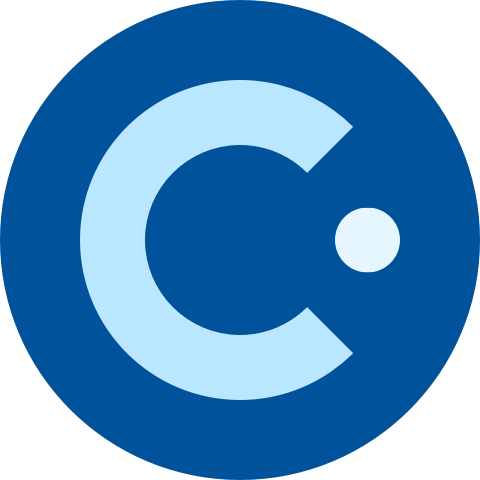Have you been struggling with your win-loss program? If so, you’re not alone. A number of organizations share in your struggle, and the reasons are usually similar. Often it is due to limited resources that they have access to, or due to the limitations associated with running the program internally in partnership with the sales team.
Contify works with clients across the geographies and sectors, and we have often heard clients say that “While win-loss analysis is immensely valuable, it comes with a lot of unique challenges.” Typically, they cite the following as challenges:
- Difficulty in getting clients and prospects to share honest opinions and feedback
- Reliance on sales teams for the majority of intelligence, who are themselves very busy chasing other functional priorities
- Challenges and risks on account of loss of information/misinterpretation
- Dependence on third-party providers – which leads to increased program cost
- Limited realization of the full value of the analysis due to the inability to do it on an ongoing/continuous basis
Contrast this with the experience that many of our clients have had with running a simpler analysis:
- Found it relatively easier to execute, as these programs have been primarily led by internal market and competitive intelligence (M&CI) specialists
- Eliminated the most pressing challenges associated with win-loss programs due to reliance on secondary sources – primarily company filings and press releases, customer testimonials, reviews, social media, and competitor website changes as the sources of intelligence
- Were able to automate a large part of the intelligence collection by leveraging a market and competitive intelligence platform (Contify in their case) significantly enhancing the cost vs. value equation
The ‘simpler’ analysis we’re talking about is called a “Competitor Deal Win Analysis”, which has worked wonders for a lot of organizations that struggle with the typical challenges associated with a win-loss analysis or do not have the resources to set one up.
The whole point of this article is not to compare a ‘Win-loss analysis’ with a ‘Competitor deal win analysis’, although a part of it is. These two sit at different ends of the insights spectrum and complement each other more than being a substitute. However, as a win-loss analysis is more popular of the two, we use win-loss analysis for context and a better understanding of our readers.
In this article, you’ll learn what a competitor deal win analysis is, the key elements to its success, how to set one up effectively, and how can a market and competitive intelligence platform help you with your competitor deal win analysis.
What is a competitor deal win analysis?

A competitor deal win analysis is a regular process of monitoring your competitors’ deal wins, deriving actionable insights by analyzing information from those deals, and then understanding the implications of those deals for your organization.
As compared to a win-loss analysis, a competitor deal win analysis relies on competitive intelligence which is analyzed to provide further insights and implications, which are then used to strategize and take actions to minimize deal losses and maximize deal wins.
A win-loss analysis relies on internal quantitative data such as win-loss ratio, win rate, and loss rate, as well as both internal and external qualitative data in the form of interviews with sales reps, clients, and prospects. While it generates competitive intelligence, a win-loss analysis employs a primary research methodology, which has its share of problems. For example, sales reps and clients/prospects lie, their statements may not always be objective, and if companies employ a third party for primary research, they become dependent on them.
What are the key elements of a successful competitor deal win analysis?

Ongoing/continuous monitoring:
A competitor deal win analysis is essentially a regular process of monitoring your competitors’ deal wins, deriving actionable insights by analyzing information from those deals, and then assessing the implications of those deal win insights for your organization. Due to the ongoing nature of monitoring, shifts in the deal wins trends or level of competitor activity can generate early signals, which upon validation, can be actioned to spot and address emerging opportunities and threats in a timely manner.
Taking a stakeholder group view:
A competitor deal win analysis helps the whole organization, but mainly the leadership, strategy, sales, and marketing teams. Not only do these teams have a different lens to look at competitor deal activity, but their interest areas may also differ, particularly for organizations that have offerings across multiple product/service lines and are present globally. A one-size-fits-all approach therefore often limits the impact of the program significantly. Taking a stakeholder group level view to optimize the intelligence collection and analysis helps serve their specific competitor intelligence and insights needs more effectively.
Optimized intelligence collection and distribution process:
Without a market and competitive intelligence platform that can automate the collection of intelligence, organize it in a centralized intelligence library, and distribute it to various stakeholders, a competitor deal win analysis can be an effort-intensive and inconsistent process. Leveraging a market and competitive intelligence software helps reduce time in intelligence collection and makes more time available for analyzing it by investigating all aspects carefully and integrating the business context more deeply. Leveraging such a platform also helps distribute the insights gathered effectively to relevant stakeholders and also makes it available on a real-time, on-demand basis.
Setting up a competitor deal win analysis program – The step-by-step process
Step One: Defining the program scope and coverage
The first step in setting up a competitor deal win analysis program, obviously, is to define scope and coverage – which essentially means, defining the list of competitors, product/service lines/ geographies that will be of interest to stakeholders. Many of our clients segment their competitor list into high/medium/low priority tiers and thus, are able to ensure deeper coverage and more effective tracking of competitors that matter the most.
It's also crucial at this stage to specifically include emerging or new competitors in your analysis, as these entities can rapidly alter market dynamics and present unforeseen challenges or opportunities.
Step Two: Setting up and optimizing the intelligence collection mechanism
Once you have the list of competitors, as well as the program scope and coverage in place, the second step is to ensure that you get to know about competitors’ deals as soon as they happen. Doing this requires a robust research approach and intelligence collection mechanism in place that ensures regular monitoring of competitors to get wind of their deals in progress, as well as their deal wins. Leveraging a market and competitive intelligence platform for competitor deal intelligence gathering has helped many of our clients optimize effort spent on intelligence gathering, while also enabling a more exhaustive coverage.
Another best practice for improving competitor win intelligence gathering is to put in place a mechanism wherein the field intelligence can be integrated with the intelligence gathered from the secondary sources. Awareness about the mechanism to share field intelligence has been found to be equally important.
Step Three: Analyzing the intelligence collected
Once you have a robust intelligence collection mechanism in place and you begin the process of monitoring the competitors and tracking their deal wins, the next logical step is intelligence analysis. Given the ongoing nature of the monitoring exercise, it becomes important to define the process for analyzing the information collected about a competitor and using it to answer tactical questions about competitors’ strategy and priorities, like the impact on your company, as well as the potential threats and/or opportunities ahead.
Having the answers to the following questions helps in finalizing the intelligence analysis process:
- What are the different lenses that we need to take for analyzing the deal intelligence gathered? For example, competitor tier-wise activity, product/service line view, industry-wise distribution, geography-wise trend, deal-size-wise segmentation, etc.
- How frequently do we analyze the deal trend? Weekly, Fortnightly, Monthly?
- Would it help to put a Dashboard in place to enable a real-time view?
Step Four: Activating competitor deal insights gathered
Once we have analyzed the competitors’ deal activity and assessed its impact on the company's strategies, plans, and priorities, it becomes important to disseminate the insights gathered to relevant stakeholders. While periodic newsletters and dashboards remain the most widely used distribution mechanism, clients are increasingly turning to comprehensive market and competitive intelligence solutions that can enable a 360-degree, real-time view of competitors’ activities.
Using such a solution, business stakeholders benefit from on-demand access to insights gathered by the M&CI specialists, the ability to slice and dice intelligence and insights, taking a lens specific to their business context or investigation area, and the ability to set up custom alerts.
M&CI teams benefit from such a platform by effective distribution and ongoing analytics around usage and engagement levels while also enabling a two-way communication mechanism to enhance intelligence collection and analysis by integrating field intelligence and gaining a deeper business context.
How does Contify help clients optimize their competitor deal win analysis program?

Gathering and analyzing competitive intelligence requires a lot of effort and research from a company's various teams, including sales & marketing teams, business strategy teams, product teams as well as executive/leadership teams. There's usually a dedicated CI team as well. Competitive intelligence tools and software can help reduce these efforts and augment them, which is why they're desirable. There are a number of CI tools like Contify available on the market, which help optimize your time and maximize productivity in the following ways:
1. Cut through the noise
Filtering irrelevant data from intelligence manually can take up a lot of bandwidth. A competitive intelligence software like Contify can help refine your data sources so that you only track the data points that matter most to you and your organization.
2. Integrate with daily tools
Contify can integrate with other tools you and your teams use daily, such as Google Drive, Zapier, and your CRM, and provide multi-channel publishing. This helps simplify collaboration and distribution to stakeholders.
3. Organize insights and information
Unless and until your intelligence is distributed in an organized and readable format, your stakeholders will have problems making the most of it. Contify can help you with things like creating taxonomies, filtering your insight feeds, saving your go-to filters, printing insights in a report format, and much more, to make it digestible.
4. Automate key intelligence reports
Contify can help you automate the generation of key intelligence reports, which will help reduce manual effort and time. Reports and dashboards will be generated using your preset preferences.
5. Set alerts
There are certain competitors and/or topics you're especially interested in. Using Contify, you can save time and maximize the visibility of such updates by enabling and customizing alerts specific to your use cases.
The role of a CI software like Contify in analysis, thus, is to make things not only easier, but much more efficient for you, your teams, and your organization.
Conclusion
To summarize, even if you are unable/struggling to run a full-fledged win-loss program, a competitor deal win analysis program can provide you great value. The value versus cost equation can further be enhanced by taking a stakeholder group view and by optimizing intelligence collection and distribution processes. Leveraging an M&CI platform like Contify to optimize intelligence collection and distribution helps M&CI teams spend more time analyzing the intelligence gathered and better assess the impact on the company’s strategy, plans and priorities and identify the threats and opportunities emerging.
Get in touch with the Contify team to understand how our platform can help you with your market and competitive intelligence needs.
OR
See Contify in action for yourself, Start a 7-day free trial of Contify.









